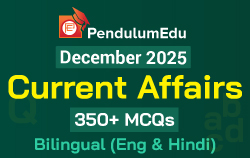Emergency Provisions - Types of Emergencies | National Emergency, State Emergency and Financial Emergency
In the Indian Constitution, the emergency provisions are provided in Part XVIII of the Constitution from Articles 352 to 360.
What are the Sources of Emergency Provisions in India?
- Emergency Provisions of the Indian Constitution have been taken from Constitution of Weimar (Germany) and Government of India Act, 1935.
- Government of India Act 1935 contained emergency provisions in section 45 for the Centre and in section 93 for the Provinces.
What are the effects of Emergency Provisions on Federal Structure of India?
- One of the special features of the Indian Constitution is the way the political system can change from being federal during regular times to unitary during emergencies.
- When an Emergency is in force, the Central government gains immense powers. The states totally come under its control.
- Without a formal amendment to the Constitution, emergency provisions transform the federal system into a unitary.
- According to Dr. B.R. Ambedkar, in times of Emergency, the Indian Constitution is so designed as to make India work as though it was a unitary system.
Types of Emergency
The three kinds of emergency provisions provided in the Indian Constitution are described below:
1. National Emergency
- Reasons: war, external aggression or armed rebellion
- Mentioned under: Article 352
- Declared by: President of India after written recommendation of the cabinet.
- Other terms used for it:
- External emergency (if national emergency is announced on the ground of war or external aggression)
- Internal emergency (if national emergency is announced on the ground of armed rebellion)
- It can be declared for the entire country as well as for a part of the country.
- In 1975, Indira Gandhi declared a national emergency on the ground of internal disturbance and without consulting cabinet.
- Internal disturbance was replaced with armed rebellion through 44th Constitutional Amendment Act, 1978. This act also added a provision of written recommendation of the cabinet.
- The declaration of national emergency can be challenged in a court.
Does National Emergency require approval? What is the duration of National Emergency? How can National Emergency be revoked?
- Both Lok Sabha and Rajya Sabha must approve the declaration of Emergency within the duration of one month from the date of its issue.
- On approval from both the Lower House and Upper House of the Parliament, it remains in force for six months.
- Every six months, it can be extended for an unlimited amount of time with the approval of the Parliament.
- A resolution, which approves the declaration of emergency or extends it must be approved by a special majority (majority of 2/3rd members present and voting) in either house of parliament.
- The President may, by later proclamation, at any moment, revoke the emergency. There is no need for parliamentary approval for this proclamation.
- The President shall lift the state of emergency in the event that the Lok Sabha adopts a resolution rejecting its extension.
What are the effects of National Emergency?
- The Parliament is entitled to enact laws on any matter listed in the state list when there is a national emergency.
- The legislation passed by Parliament pertaining to State matters becomes ineffective six months after the emergency has ended.
- If the Parliament is not in session, the President may also promulgate ordinances on matters of state.
- Impact of National Emergency on Fundamental Rights:
- The impact of a national emergency on the fundamental rights (FRs) is outlined in Articles 358 and 359.
- In the event of war or external aggression, Article 358 addresses the suspension of the freedoms protected by Article 19. There is no need for a separate order to suspend them.
- Article 359 addresses the suspension of additional FRs, excluding those that are protected by Articles 20 and 21.
- Article 359 gives the President the authority to revoke the right to go to court to enforce FRs at time of National Emergency.
2. State Emergency or President’s Rule
- Reason: failure of constitutional machinery in states
- Mentioned under: Article 356
- Other terms used for it: State Emergency/Constitutional Emergency
- The word ‘emergency’ is not used by the Constitution for this situation.
What are the Grounds of imposing President’s Rule?
- This can be proclaimed under Article 356 on two grounds.
- One ground is provided in Article 356 and another ground is provided in Article 365.
- Under Article 356, President can impose President’s rule if there is a situation in which it is not possible to carry on the government of a state as per the Constitution.
- This can be done by the President either on the governor’s report or without the report of the governor of the state.
- Under Article 365, whenever a state fails to comply with or to give effect to any direction from the Centre, the president can impose President’s rule.
Does the President's Rule require Parliament’s approval? What is the duration of President’s Rule?
- Both Lok Sabha and Rajya Sabha must approve imposing of the President’s rule within two months from the date on which it was imposed.
- The President’s rule remains in force for six months if both Rajya Sabha and Lok Sabha approve it.
- With the approval of the Parliament, it may be extended every six months for a maximum of three years.
- President can revoke President’s rule at any time without the parliamentary approval.
What are the effects of President’s Rule?
- The state government’s functions and powers of governor or other executive authority in the state can be taken up by the President.
- The President may proclaim that the Parliament will exercise the state legislative branch's functions.
- The state council of ministers, which is led by the chief minister, is dismissed by the President when a state comes under the President's Rule.
- With assistance from the state chief secretary or advisors the President appoints, the state governor administers the state on behalf of the President.
- Ordinances for state governance may be promulgated by the President.
3. Financial Emergency
- Reason: Threat to financial stability of India
- Mentioned under: Article 360
- Proclaimed by: President
- As of now, no Financial Emergency has been proclaimed.
Does the Financial Emergency require Parliament's approval? What is the duration of Financial Emergency? How can the Financial Emergency be revoked?
- Both Lok Sabha and Rajya Sabha must approve a proclamation announcing financial emergency within two months from its issue.
- Once both Rajya Sabha and Lok Sabha have approved the Financial Emergency, it continues unless it is revoked.
- There is no maximum time limit for how long it can continue. It does not need repeated parliamentary approval to continue.
- Either Lok Sabha or Rajya Sabha can pass a resolution endorsing the financial emergency proclamation with a simple majority.
- A majority of the house's members who are present and voting is known as a simple majority.
- The President may withdraw a financial emergency proclamation at any time with a new proclamation.
- The approval of parliament is not necessary for such a proclamation.
What are the effects of Financial Emergency?
- The Center gains complete authority over the states in financial matters during the financial emergency.
- The States may get directives from the Union Government about financial matters.
- After money bills have been passed by the State Legislature, the President may ask the States to hold them all for the Parliament's consideration.
- The President may request that all or any class of people employed by the government have their pay and benefits reduced by the States.
- The President may also issue directives for the decrease of pay and benefits for workers of the Central Government, including Supreme Court and High Court judges.
In India, national emergency has been imposed three times. But, Article 356 has been used randomly to fulfill political motives. Article 360 has not been proclaimed even once so far. Emergency provisions should be used with caution by the government.
Frequently Asked Questions (FAQs) about Emergency Provisions
In which part of the Indian Constitution are emergency provisions provided?
The emergency provisions are provided in Part XVIII of the Indian Constitution from Articles 352 to 360.
What are the three emergencies that can be imposed in India?
The three emergencies that can be imposed in India are national emergency, President’s rule and Financial Emergency.
What are the grounds under which national emergency can be declared in India?
War, external aggression or armed rebellion are the grounds under which national emergency can be declared in India.
Under which article of the Indian Constitution is the President’s rule mentioned?
President’s rule is mentioned under Article 356 of the Indian Constitution.
How many times has Financial Emergency been imposed in India so far?
Financial Emergency has not been proclaimed in India even once so far.




 Latest
Latest 



Comments